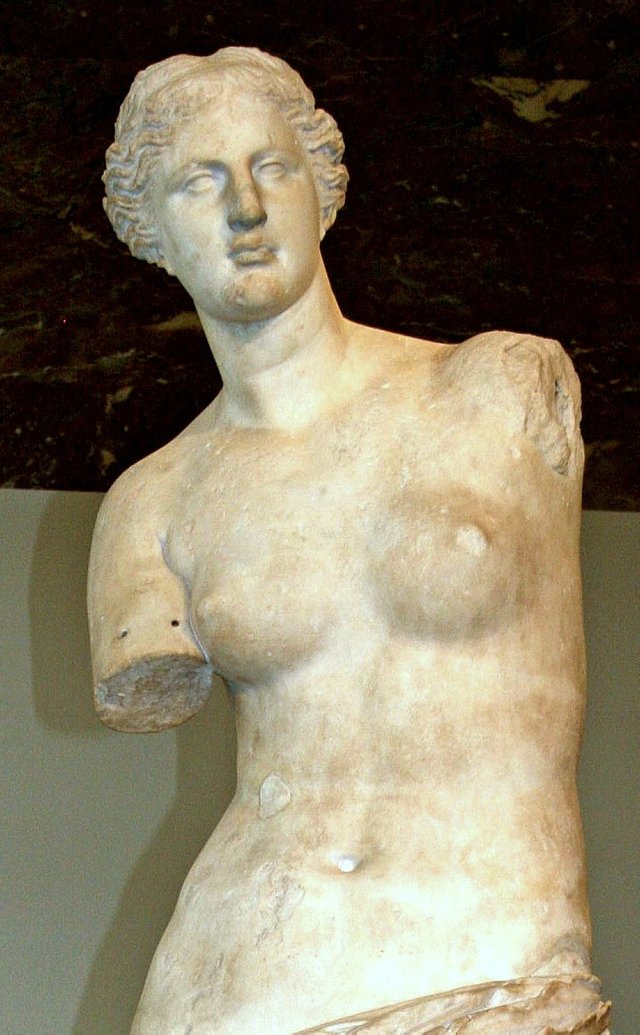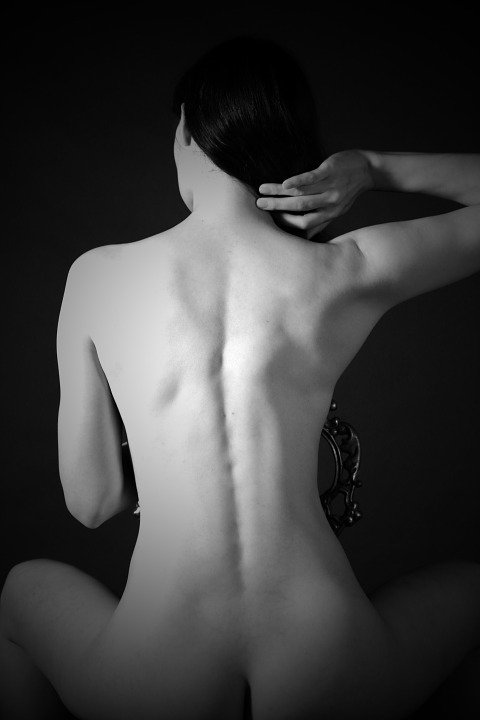
The idea of Platonic Love is, for the first time in history, present in the Feast, written by the Greek thinker Plato. This love was supposed to be a way to get to know the idea of good and beauty, not sexual fulfillment, therefore it treated homosexuality as something natural. During the Renaissance, when Plato's thoughts were being reconciled with Christianity, which condemned love other than heterosexual, it was decided to reinterpret the thoughts of the ancient scholar and to reduce the concept of platonic love only to the elation of the spiritually experienced.
The 15th century brought about many events that led to a perception of beauty in accordance with a double orientation. These included, for example, new ways of painting in Flanders, the Italian discovery of perspectives, the spread of neoplatonic thought in liberated arts, and Savonarola's mysticism.

At present, such an orientation might seem contradictory, but at that time it was as coherent as possible. Nature was imitated as nature commanded, because beauty was understood in this way, but sometimes supernatural perfection was considered, which could not be embraced by human eyes because it was not realized on earth. The sense of sight enables us to understand the supra-sensory world, because it is known as the visible world, logically ordered, which is the center of the lunar reality.
To be an artist in the Renaissance meant to create new works, but also to imitate the visible world, although at first glance these two concepts seem to be mutually exclusive.

According to Leonardo da Vinci, the follower contemplates and creates at the same time, is in harmony with nature, but does not repeat forms passively. In Leonardo da Vinci's works one can notice mysteriously beautiful female faces, which the author refers to as sfumato. In the Treatise on Painting of 1498 we read that "the painter is the master of all kinds of people and all things". The author claims that an artist who wants to create beauty will create it, and similarly, if he wants to show terrible things, he will succeed. You are the master of the landscape, which he paints. First, he designs it in his head, then transfers his vision of the world to the canvas, and so the mountains can be hills, and between them has the right to arise the horizon of the sea.
The artist's best tool are his hands, which create a harmonious reality in the painting. Leonardo da Vinci's thesis is confirmed by his painting "Madonna among the rocks" (c. 1482, Paris, Louvre), which shows a combination of the artist's inventiveness and imitation of nature by placing Madonna and her children above the brook, surrounded by rocks and vegetation.
An image that creates its own reality or only appears to be a truth, that is an illusion, a simulation, is referred to as a "simulacrum" (Latin simulacrum). Reality is not a reflection of nature, but a recreation of the beauty of the whole. When invention and imitation are combined, it is possible to show nature precisely, but from the point of view of the creator. Thanks to this, the beauty seen by the artist joins the truth about something.
Plato rejected the concept of beauty as a imitation of nature, which was rehabilitated thanks to the neoplatonic movement promoted by Marsilia Ficina in Florence. He decided to spread the wisdom of the ancient philosopher and to show its validity. He ordered the dispersed symbolicity, because its aspects seemed to be inconsistent. The main idea was to combine Platonic thought with Christian doctrine, so that beauty was no longer identified with proportion and harmony. The beauty of the supra-sensory (not the beauty divided into parts), reveals the truth of the beauty, because the beauty shown by God radiates to the whole nature, not only to the human being.
Plotinus in his work Enneada shows that it is not worth to judge a man because of his appearance, because even someone with an ugly face can be very wise, that is why you should "race" his inner beauty, and if it does not delight us, we will not delight our inner beauty, because you must not perceive people because of their ugliness. The 15th century work Theologia platonica, written by Marsilio Ficino, says that contact with the man you love always evokes negative emotions in us, connected with the fact that we do not understand what we want. As Ficino writes, in contact with the loved one, we shout: "This man has something in him that burns me down! Philosophers Pico and Bruno presented the magical character of the beauty of nature, as well as the creators of ferrarian painting.
The key to the notion of nature (to achieve a balance between macro- and microcosm) are the hermetic and physiognomic alchemy that appears in these authors. It was from them that writers and poets drew their inspiration, creating love treatises in which beauty is placed on the same level as good and truth. The literary works were read by painters who, thanks to their increased interest in their work, no longer had to follow rigid rules, that is, were not forced to paint by imitating nature; they could stop following them. Treaties on this subject have been disseminated by Pietro Bembo and Baldassare Castiglione to the literary community. This has led to a less rigorous use of antique symbolism.
Giovanni Pico della Mirandola already spoke about imitating the general style, not the specific forms. Francesco Colonna, one of the most mysterious authors of Western Europe in the 15th century, published a book immediately after the invention of the print entitled: Hypnerotomachia Poliphili (Latin Polyphila struggle for love in a dream), which is extremely incomprehensible. Greek, Hebrew, Arabic, Chaldean and even Egyptian hieroglyphs mix here. The author often mixed up languages and created new words. There is almost no surviving copy of this strange novel, and there is even more of the Gutenberg Bible. Colonna's song is full of eroticism, and the main character, Poliphil, takes part in a dream of mysterious rituals and travels in love lands to regain his lost lover, Polia. When the first letters of the chapters are connected, you can read the notation: Poliam Fraternity Franciscus Columna Peramavit (Brother Francis loved Poland very much).

Plato's feast tells the story of "twin Venus", which symbolizes two degrees of love ("honorable and commendable"), on the same level. The Titanic in his painting Love of Heaven and Earthly Love shows two different manifestations of the ideal of female beauty. Venus's painting depicts neo-Platonian symbolism through Ficina's reinterpretation of
Mythology. Giovanni Pico della Mirandola also places heavenly Venus in the middle. Savonarola believes that beauty is not only the quality of the proportions of the parts, but his light shines the stronger the closer he is to God and the heavenly beauty. Botticelli thought the same way, placing the Venus Genitrix in the middle of the double allegory of Spring and the Birth of Venus.
Renaissance literature is characterized by putting man at the centre of attention, and thus love, as one of the most exalted human feelings, was a very often used literary motif. Love is inextricably linked with beauty, which in the period of interest in neoplatonism became the starting point for many literary texts. Renaissance writers presented the theme of love in different ways.

The outstanding representatives of this trend were undoubtedly Francesco Petrarka and Maurice Scève. Sonetas for Laura Petrarki are a series of poems (most of them sonnets), called by the author Small Italian poems (an orgy of the Latin Rerum vulgarium fragment). The reader does not know anything about Laura, the main character of the sonnets, and is not even sure whether she really existed. Love in this series of erotics is presented not only as a feeling, but above all as an existential and metaphysical experience, which meets the conditions of Platonic love.
Love for Laura is presented on many levels: emotional, intellectual, existential and even religious. When his beloved dies, the lyrical subject realizes that love is the way to God, even though it happens in the unconscious. Love, according to the Platonic intuition of anamnesis, helps to awaken the spirit and "look into the eyes". The closeness of man and God in these works is shown by the predominance of prayer throughout the cycle, which is in harmony with the idea of neoplatonism. The very name of the protagonist may be an analogy to the myth of Daphne and the Apollo poetry god chasing her from Ovid's Metamorphoses.
Delia, an object of the highest virtue, was written in 1543 as a collection of poems by the French writer Maurice Scève. The lyrical subject tells the story of his relations with a perfectly beautiful, unfamiliar woman, who has a huge but hopeless love for her. At the beginning, the pieces concern a lover who focuses on admiring the beauty of her beloved woman and the suffering caused by meditation on her. The subject suffers because he knows that his love will always be unfulfilled, so he does not even try to get closer to his beloved, as illustrated by the petriarchal vision of love, which, however, gives way to neo-Platonic inspiration. A woman even becomes a divine being in her perfection, which makes it impossible to love her passionately. The lover agrees with this idea and begins his own pursuit of the ideal in order to realize the platonic dimension of his love, which is based on the timeless character of this love, because even after his death love will continue, as will suffering.
There are two theses about the addressee of the works. Firstly, Scève's music could have been that of his pupil, the Pernette du Guillet, a beautiful 17-year-old daughter of a wealthy merchant who learned Latin from the author. However, this claim has not been substantiated. Scève appreciated the work of Petrarki very much, which leads to the conclusion that a beautiful, ideal stranger never existed. In this case, the title of the cycle is the anagram of the word idée (idea).
The Platonic concept of love was reinterpreted during the Renaissance so as to reconcile it with Christian doctrines. Ficino applied a clear division of love into the spiritual and the physical aspects. The former was much more important in Plato's works, therefore the feeling between two men did not necessarily mean homosexuality at all. There was no shortage of references to God and prayer in literature, and women were idealised and loved with pure love, without any erotic additions.
Bibliography:
- U. Eco, History of Beauty, Poznań 2008.
- G. Bataille, Eroticism, translation by M. Ochab, Gdańsk 1999.
Photos :
Hello @krasnalek, your post has been selected by our curation team and it will be showcased in the daily exhibition of TALP. The curators of The Alexandria's Library Project found your post to be outstanding and agreed that it is worth recognition.
We strive to find the best posts in matters of Philosophy, History, Science, and Literature. You can read more about the TALP initiative here. You can also join our Discord server in this link.
Best regards, Johanna.
Downvoting a post can decrease pending rewards and make it less visible. Common reasons:
Submit
Thanks !
Downvoting a post can decrease pending rewards and make it less visible. Common reasons:
Submit